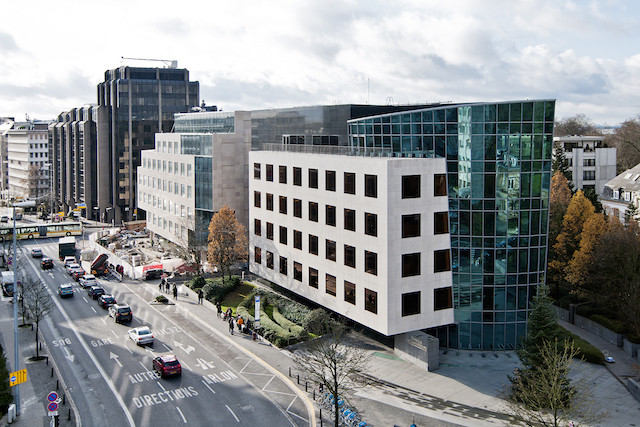NO2 enters the air mainly through burning fuel, and long exposure to the gas can lead to asthma as well as respiratory infections.
Interim findings from a year-long programme launched by the environment ministry with participating communes found that the safe annual threshold of 40 µg/m3, set by the European Commision, had been breached in seven locations.
The worst levels were recorded at monitoring stations on rue de Gasperich in Hesperange, with a six-month average of 54.24, followed by:
- avenue Kennedy in Esch-sur-Alzette (51.08);
- rue des Remparts in Echternach (50.57);
- avenue de la Liberté in Differdange (49.14);
- rue des Ecoles in Differdange (43.14);
- boulevard Royal, in Luxembourg City (44.92).
At-risk locations
Other monitoring stations risked crossing the threshold if levels increase during the last six months of the year. They included:
- route de Mondorf, in Bettembourg;
- rue de Stavelot, in Diekirch;
- route de Burange/route de Luxembourg, in Dudelange;
- rue de Luxembourg, in Esch-sur-Alzette;
- (389) route de Thionville, in Hesperange;
- avenue de la Liberté, in Luxembourg City;
- Grand rue, in Wasserbillig;
- route de Longwy, in Pétange.
Since 1 January 2010, the safe NO2 exposure threshold set by the European Commission was established at 200 µg/m3 on average per hour (which should not be exceeded more than 18 times per year) and 40 µg/m3 on average per year. (For the purpose of the study, researchers worked with a 4 µg/m3 margin of error).
“We observe that critical locations have been identified in the city centre, south west of the country and along borders,” the report author wrote. “For the majority of the testing sites there is no risk they will breach safe levels. For the seven stations where the level is higher than or equal to 44 µg/m3, the risk of breaching the limit is clear.”
Infringement proceedings
The findings will come as little surprise to the European Court of Auditors who, in a September 2018 report on air pollution, reported that a letter of formal notice had been sent to the grand duchy concerning infringement of the ambient air quality directive in relation to NO2 levels. This is the first state of infringement proceedings.
Luxembourg for its part will continue to monitor air quality for NO2 at 35 locations in 22 communes until 12 December 2018. An environment ministry spokesperson told Delano on Wednesday that its air quality programme aims to tackle NO2 pollution through specific measures including traffic reduction, promoting public transport and reducing diesel vehicles.
“We are already discussing the first set of results with the concerned communes. Since the results of the campaign are only a reference to a very specific location, specific actions will be necessary to reduce the levels of NO2 on these locations,” the spokesperson said. “On the scale of the communes, there are several additional possibilities to the more general measures that are being discussed, such as for example fresh air corridors or a traffic light control systems, and the Modu 2.0 strategy that can already make a big difference.”
Air quality signs
Luxembourg City, which has areas where NO2 levels have exceeded EU limits every year since 2003, has adopted its own individual air quality plan (2010-2020) in which it reported that “road traffic is by far the most important source of NO2 emissions in the study area.”
It further added that air pollution reduction measures had not been enough to lower emissions in compliance with European legislation. Among the measures not yet tried for 2015-2020 will be public signs displaying air quality values to raise public awareness and regulation on heating with wood to reduce emissions.
